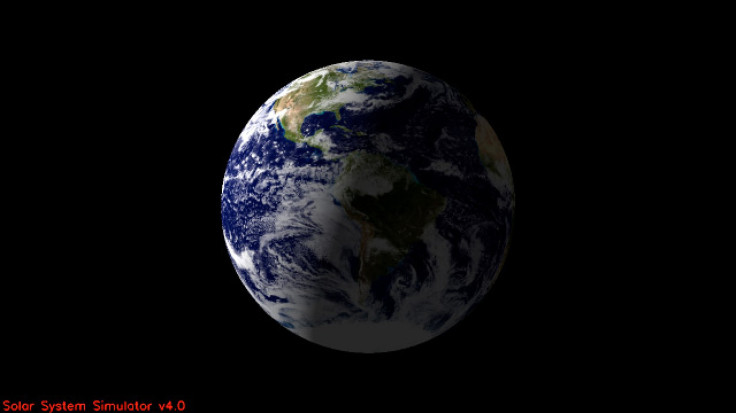Earth To Appear As A ‘Pale Blue Dot’ In A Photo From Saturn’s Neighborhood, Courtesy Of NASA’s Cassini
Earth will be captured in a photo taken from hundreds of millions of miles away on July 19, by NASA’s Cassini spacecraft, which is currently exploring Saturn, the space agency announced on Tuesday.
Cassini is composing a multi-image portrait of the Saturn system, and our home planet will be a part of that mosaic, appearing as a small, pale blue dot from between the rings of Saturn.

According to NASA, Cassini will take about 15 minutes to capture Earth, starting at 5:27 p.m. EDT. As Saturn will eclipse the sun from Cassini's point of view during that time, the spacecraft’s vantage point in Saturn's shadow will make it easier to look at the planet's rings. North America and part of the Atlantic Ocean will be in sunlight when Cassini takes the picture.
"While Earth will be only about a pixel in size from Cassini's vantage point 898 million miles (1.44 billion kilometers) away, the team is looking forward to giving the world a chance to see what their home looks like from Saturn," said Linda Spilker, Cassini project scientist at NASA's Jet Propulsion Laboratory, or JPL, in Pasadena, Calif.

Cassini composed eclipse mosaics of the Saturn system in 2006 and 2012, but the July 19 image will be the first to capture the Saturn system with Earth in its natural blue color. The image also will be the first to capture Earth and its moon using Cassini's highest-resolution camera.
Carolyn Porco, head of the Cassini imaging team at the Space Science Institute in Boulder, Colo., and her team examined Cassini's planned flight path around Saturn, looking for the correct time when Earth would not be obstructed by Saturn or its rings. The team found that July 19 would allow Cassini to spend time in Saturn's shadow to collect both visible and infrared imagery of the planet and its ring system.
NASA satellites and spacecraft have taken space-based images of the Earth before. In 1968, the Apollo 8 mission to the moon captured the planet in an image, titled "Earthrise,” which was taken from about 240,000 miles (380,000 kilometers) away.
The Voyager 1 spacecraft took the Earth’s photo in 1990, titled “Pale Blue Dot,” which was captured from about 4 billion miles (6 billion kilometers) away.
“The main science goal for the mosaic we are making of the Saturn system is to look at the more diffuse rings that encircle Saturn and check for change over time,” NASA’s JPL said in a statement. “A previous mosaic of the Saturn system Cassini made in 2006… We'll want to see how that looks seven Earth years and a Saturnian season later, giving us clues to the forces at work in the Saturn system.”
© Copyright IBTimes 2024. All rights reserved.












